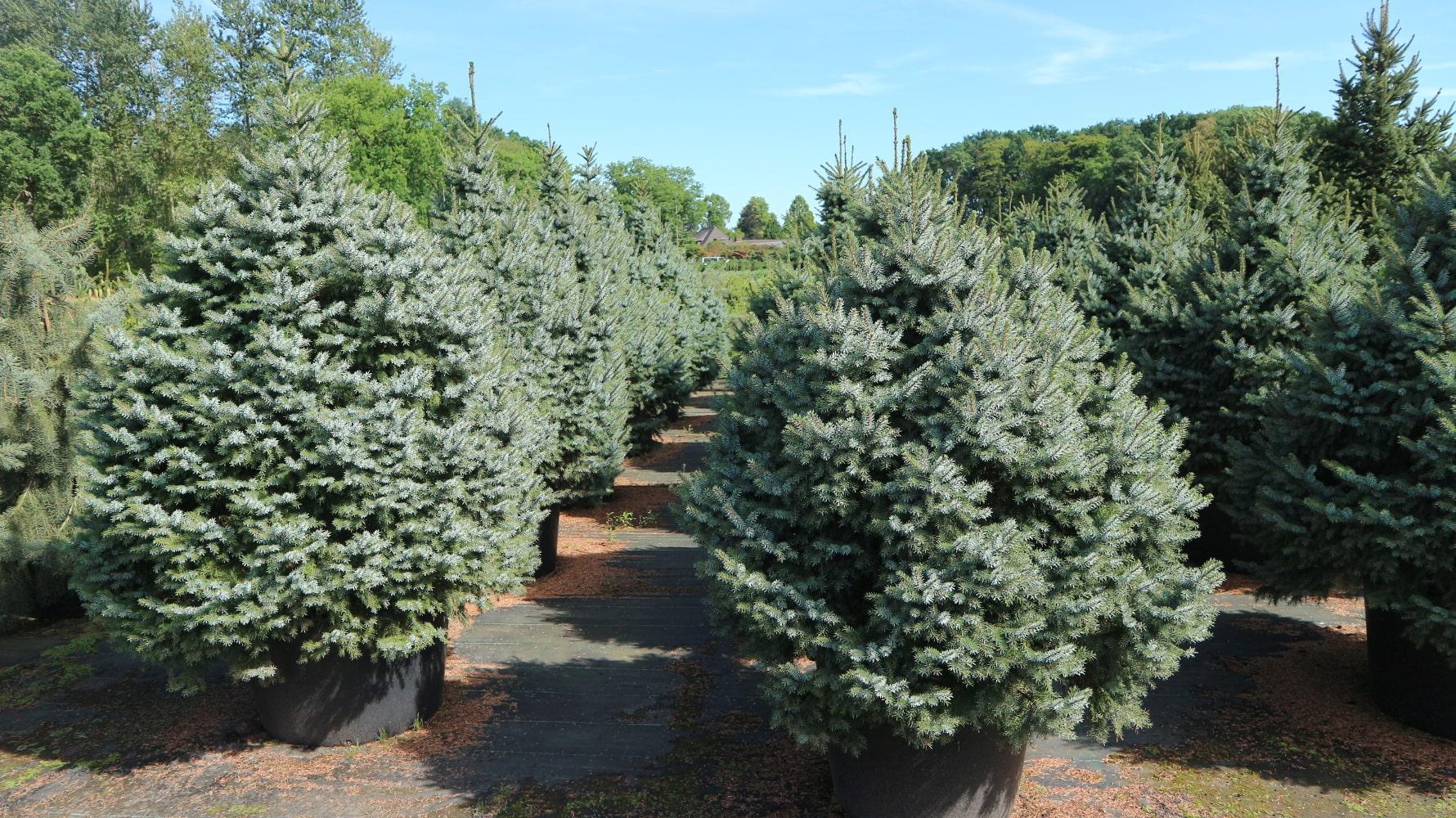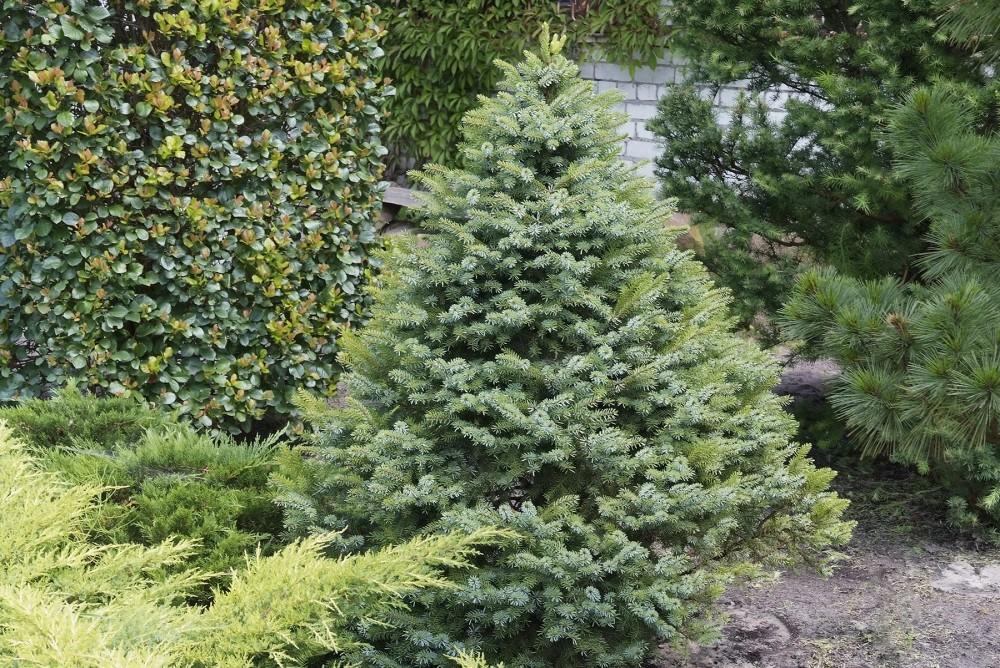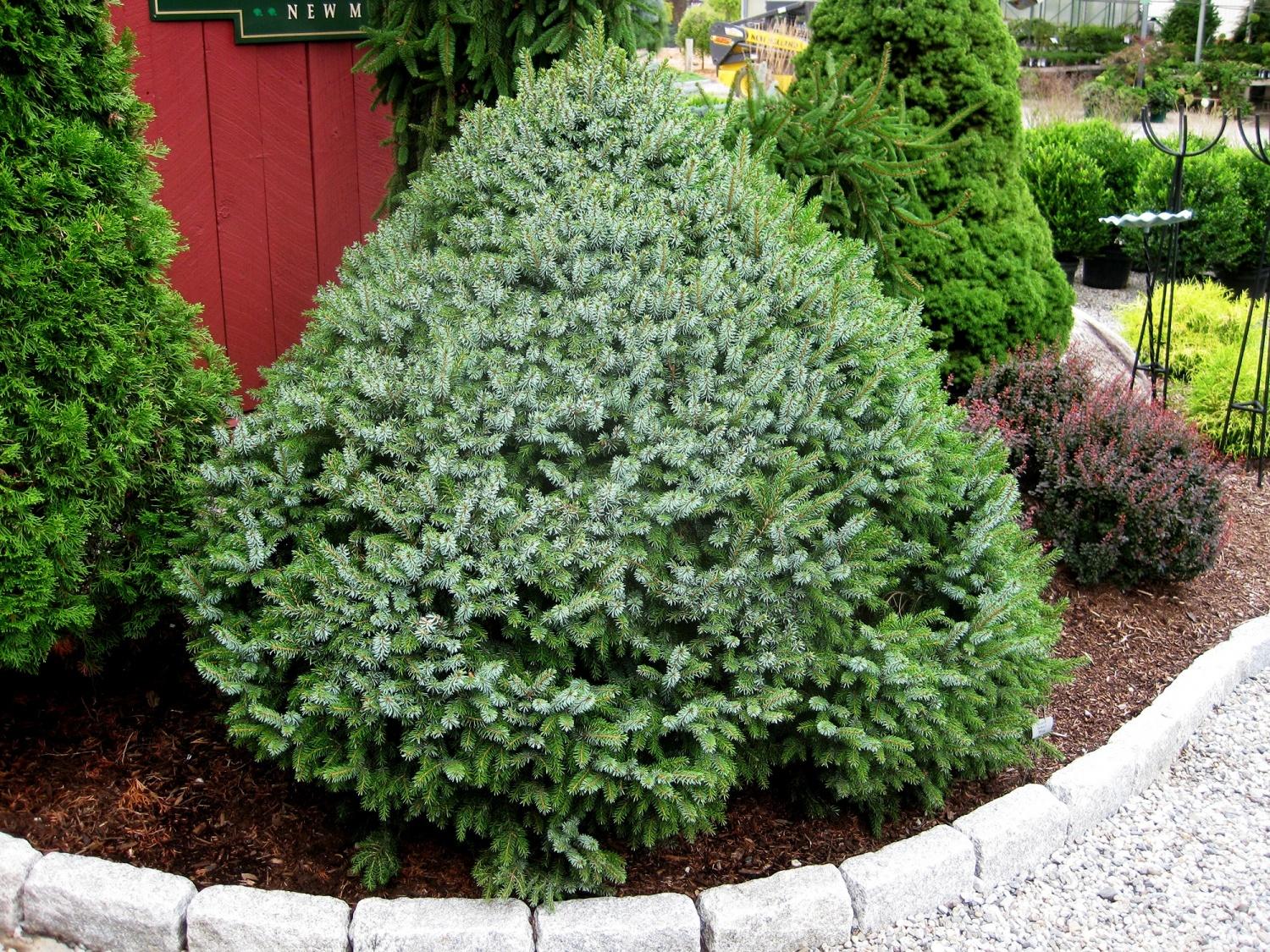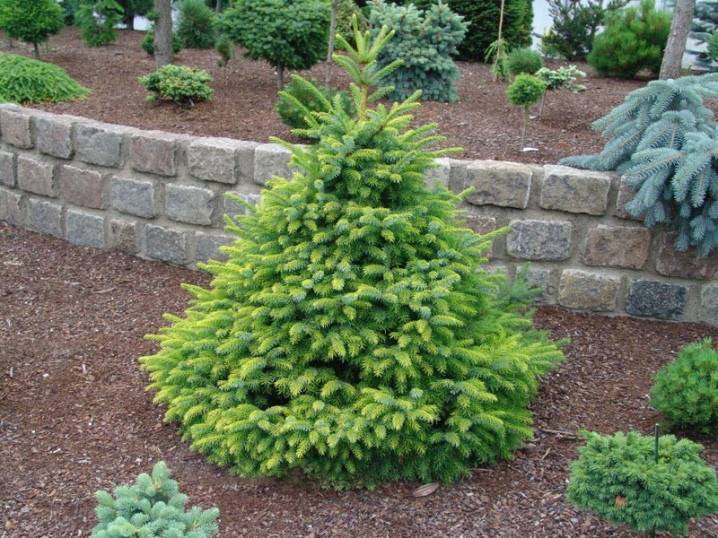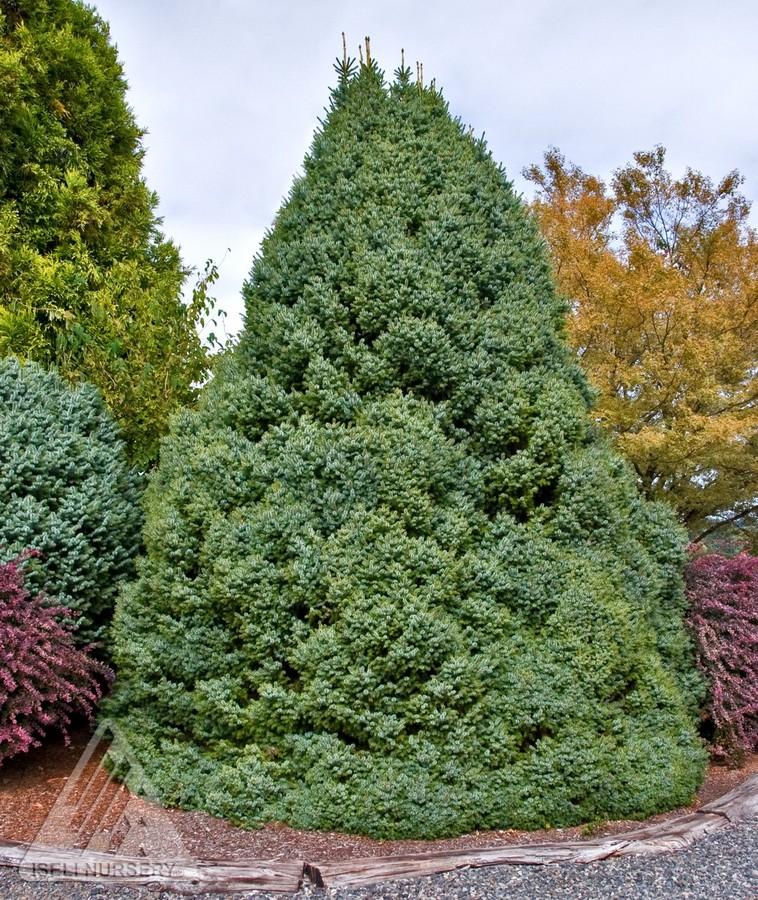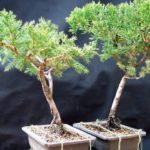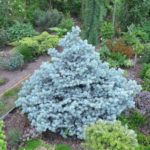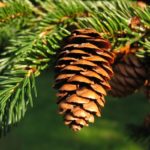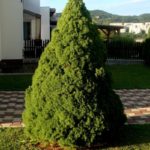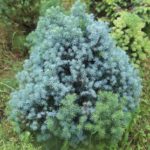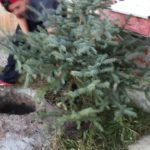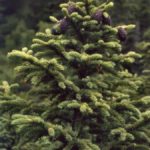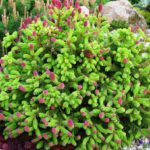Serbian Nana spruce is an attractive dwarf plant that has been known since 1930. This mutation was identified and confirmed by the workers of the Gudkade brothers nursery, which is located in the Dutch city of Boskop. From that moment on, Nana became widespread. They began to actively grow it in gardens and parks. In order for a crop to retain its decorative properties, it must be properly cared for.
Description of the tree
If the Serbian Omorika Nana is a dwarf form resulting from a natural mutation. An adult tree grows to a maximum of 3 meters. Moreover, its crown in diameter does not exceed 2 meters.In favorable conditions, the life expectancy of the culture reaches 300 years.
This plant is characterized by slow development. Its growth does not exceed 5-10 centimeters in height, and 5 in width. The young plant has a rounded crown. At an older age, it stretches in height and becomes broadly pin-shaped.
Nana spruce is characterized by a radial arrangement of needles, which is why the tree seems quite fluffy. The length of the plant’s needles is 7-8 millimeters, and the width is about 1.5. The needles are dark green on top and blue on the bottom. This color scheme makes the tree even more attractive.
Sometimes elongated cones appear on spruce. They are up to 6 centimeters long and lilac in color. As the fruits ripen, they acquire a dark brown hue.
Natural range
Spruce Picea Omorika Nana is widespread in western Serbia. The culture is also found in the eastern regions of Bosnia and Herzegovina. Due to its high degree of frost resistance and undemanding soil composition, the crop is grown in northern Europe and America.
Landing
Omorika Nana is considered an unpretentious crop that can easily withstand development in shady places. However, it is much better to plant the plant in well-lit areas. In this case, the place must be protected on all sides.
It is recommended to buy Nana spruce seedlings from specialized nurseries. It is advisable to give preference to plants that have a closed root system. The best age is 4 years. Such seedlings are characterized by a well-branched root system that easily adapts to new conditions.
It is recommended to carry out planting work in the spring. In this case, it is necessary to prepare a recess that is 2 times the size of the roots.It is recommended to provide a drainage layer of 10 centimeters in size in the hole. In addition to regular soil, it is worth adding a nutrient composition there. It should include soil from the depression, peat and humus.
Aftercare
In order for Nana spruce to retain its decorative properties, it needs to be provided with complete and high-quality care. Immediately after planting, watering should be carried out regularly, not allowing the soil to dry out. At the same time, excess moisture is also harmful. In this case, there is a risk of rotting of the root system.
An adult tree needs to be watered less often. At the same time, for every meter of crop you need to spend at least 10 liters of water. Between moistening, the top layer of soil should have time to dry out. In hot weather, watering will have to be done weekly.
Irrigation of the crown is of no small importance. In hot weather, this procedure should be carried out every day. If there is a fog-forming installation on the site, there is no need for such manipulation. Sprinkling helps protect the needles from drying out and washes away dust. In addition, this procedure protects the plant from spider mites.
From time to time, Serbian spruce needs to be fed. It is recommended to do this with special fertilizers for coniferous plants. In spring, products with a high nitrogen content should be used, and in summer and autumn, substances with phosphorus and potassium should be used.
Spruce absorbs microelements best through vegetative organs. Therefore, every 2 weeks it needs to be sprayed with a feeding solution for conifers. It is even better to use a chelate preparation for this purpose.In this case, it is worth adding “Zircon” or “Epin” to the sprayer.
During the first two seasons after planting, the crop must be loosened regularly. It is important to consider that the branches of the plant lie on the ground. Therefore, to carry out the procedure, they must be carefully lifted by hand.
Subsequently, loosening the soil is not advisable. Nana spruce is characterized by a superficial location of sucking roots, which can be easily damaged. The soil under the Nana spruce needs to be mulched with acidic peat or pine bark. This will help avoid contact with the ground and retain moisture.
The Serbian Nana spruce is characterized by a beautiful and symmetrical crown, which does not require special shaping. In young plants, sanitary pruning is replaced by cleaning and sprinkling. After the crop is pulled out, the crown becomes sparser. At this stage, you can use pruning shears to remove dry and broken branches. It is recommended to do this every spring.
If necessary, the crown can be corrected by pruning. Serbian spruce can withstand shearing well. However, to give the crop a more unusual shape, pruning must begin as early as possible.
How to propagate
Serbian spruce is propagated by grafting only in nurseries. Thanks to this, it is possible to obtain a beautiful standard shape. The Nana variety produces cones from which seeds can be collected. It is not difficult to germinate seed material. It is much more difficult to bring the sprouts to transplant to a permanent site. In addition, it is far from certain that the plant will retain its varietal characteristics.
Until the Serbian spruce receives the necessary commercial properties, it has to be moved from place to place. In addition, the number of varietal trees will be small.Growing coniferous plants by seed requires not only certain skills, but also a lot of space. There is no point in doing this for beginning gardeners.
To propagate spruce yourself, you should resort to cuttings. However, this process is also considered quite complex. Sometimes the plant dies 2-3 years after the cuttings take root. This happens quite often, so you need to prepare for it.
Preparation of cuttings can be carried out throughout the season. However, it is best to do this in the spring, so that the planting material has time to take root before the cold weather. To harvest cuttings, the shoot must be torn off with the heel. After this, you need to remove the lower needles and soak the future plant in the stimulator. Then it can be planted in perlite, sand or peat-sand soil.
It is recommended to provide the crop with high soil and air humidity. At the same time, it must be reliably protected from the sun. After rooting the Serbian spruce cuttings, they can be planted in a more nutritious substrate. This is usually done after 2.5-3 months. To plant a plant at this stage, it is recommended to mix leaf humus and sand in equal parts. You can also use a substrate for coniferous plants for this purpose.
Pest Control
The described culture rarely suffers from parasite attacks or the development of diseases. However, if the rules of care are not followed, it may be exposed to the following pests:
- Sitka spruce aphid - affects all parts of the tree. This leads to yellowing and falling of the needles.To prevent and destroy parasites, the plant is treated with garlic or onion infusion. You can also use potash soap.
- Spider mites - attack spruce during dry summers. To get rid of parasites, you need to use garlic infusion or Bordeaux mixture.
To avoid problems, you need to adhere to the following rules:
- systematically loosen the soil;
- destroy weeds;
- maintain optimal soil moisture parameters;
- apply fungicides and insecticides in a timely manner.
Application
Serbian spruce Nana is often used in landscape design. The popularity of this plant is associated with its excellent decorative properties and ease of cultivation. The culture can be used to create hedges, as an accent, or to form compositions with other conifers.
Nana is a highly sought-after coniferous plant that has an attractive appearance. This culture fits perfectly into a variety of compositions and does not require complex care.

